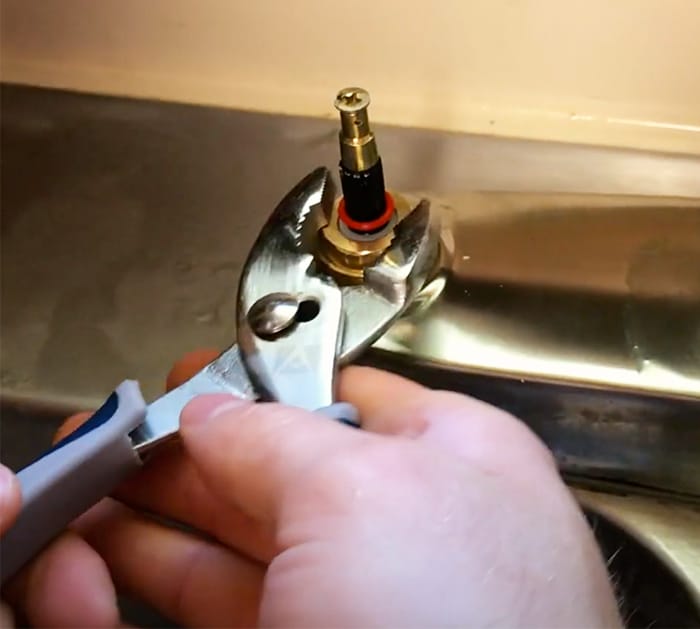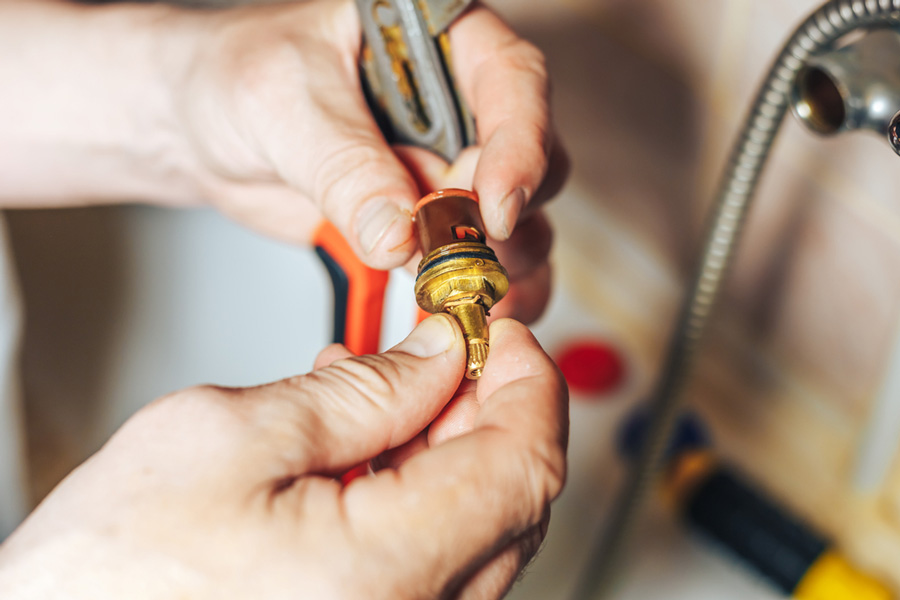Each person will have their own unique assumption when it comes to Should I Repair or Replace a Leaky Faucet?.

Dripping taps may look like a minor trouble, however their impact surpasses just the aggravation of the sound. From wasting water to incurring unnecessary financial prices and wellness threats, disregarding a leaking tap can result in different consequences. In this post, we'll look into why it's important to resolve this common family issue without delay and properly.
Wastage of Water
Ecological Impact
Trickling faucets add significantly to water waste. According to the Epa (EPA), a solitary faucet dripping at one drip per secondly can throw away greater than 3,000 gallons of water annually. This not only stress water resources but also influences environments and wild animals dependent on them.
Financial Expenses
Raised Water Bills
Beyond the environmental effect, trickling taps can inflate water expenses considerably. The accumulated wastage in time equates into higher utility costs, which might have been prevented with timely repair work.
Prospective Home Damage
Furthermore, long term trickling can cause damage to components and surface areas surrounding the tap. Water build-up can create staining, rust, and even structural problems if left neglected, causing added fixing expenses.
Health Problems
Mold and Mold Growth
The consistent existence of dampness from a leaking tap produces an ideal setting for mold and mildew development. These fungi not only endanger indoor air high quality yet additionally position health and wellness threats, particularly for individuals with respiratory system problems or allergic reactions.
Waterborne Illness
Stationary water in dripping faucets can come to be a breeding place for germs and other virus, increasing the risk of waterborne illness. Pollutants such as Legionella microorganisms flourish in stagnant water, possibly leading to serious diseases when consumed or breathed in.
DIY vs. Professional Repair service
Benefits and drawbacks of DIY Fixing
While some might attempt to fix a dripping faucet themselves, DIY repairs come with their very own set of obstacles. Without correct understanding and devices, DIY attempts can intensify the issue or bring about insufficient repairs, prolonging the issue.
Benefits of Hiring an Expert Plumber
Working with a professional plumber guarantees that the underlying cause of the trickling faucet is dealt with effectively. Plumbings possess the experience and tools to diagnose and fix tap concerns efficiently, saving time and minimizing the threat of more damage.
Step-by-Step Guide to Repairing a Dripping Tap
Tools Required
Before attempting to fix a dripping faucet, collect the essential devices, consisting of a flexible wrench, screwdrivers, substitute parts (such as washers or cartridges), and plumber's tape.
Common Tap Issues and Their Solutions
Recognize the kind of faucet and the particular issue creating the drip. Typical problems consist of damaged washers, rusty shutoff seats, or defective O-rings. Describe maker instructions or on the internet tutorials for step-by-step support on repair work.
Safety nets
Routine Maintenance Tips
To stop dripping taps, carry out regular upkeep such as cleaning aerators, examining for leaks, and replacing worn-out parts without delay. Additionally, consider installing water-saving devices or upgrading to more efficient components.
Relevance of Prompt Services
Resolving leaking faucets as soon as they're seen protects against further water wastefulness and prospective damage, inevitably conserving both water and money in the future.
Effect On Property Worth
Understanding of Well-Maintained Building
Keeping a residential property in good condition, including attending to upkeep problems like trickling taps, boosts its viewed value and worth amongst potential buyers or renters.
Impact on Resale Worth
Qualities with properly maintained plumbing components, including taps, command greater resale worths in the property market. Resolving leaking taps can add to a positive perception during residential property assessments and settlements.
Ecological Obligation
Private Contribution to Preservation
Taking duty for taking care of leaking faucets straightens with wider initiatives towards water preservation and environmental sustainability. Every individual's actions collectively make a substantial effect on protecting valuable sources.
Sustainable Living Practices
By prioritizing timely fixings and adopting water-saving practices, individuals add to sustainable living methods that benefit both existing and future generations.
Final thought
Addressing a trickling faucet exceeds mere convenience; it's a necessary action toward conserving water, minimizing economic expenses, and protecting wellness and property. Whether via do it yourself repair work or professional support, taking action to repair dripping taps is a small yet impactful method to advertise responsible stewardship of sources and add to a healthier, extra lasting future.
How to Fix a Leaky Faucet: Step-by-Step Repair Guide
A leaky faucet may seem like a simple annoyance, but if it's not fixed promptly, that leak could cost hundreds to potentially thousands. From water damage to mold, mildew, and high water bills, even a tiny leak can be catastrophic if left unattended. Damage like this can even affect the overall value of your home, so it's important to take the right approach for leaky faucet repair. You may need the help of a plumber in some cases, but we've got a few tips you can try on how to fix a leaky faucet before calling the pros.
Four Faucet Types
When you're learning how to fix a leaky faucet, the first step is knowing what kind of faucet you're working with! There are four common types.
Cartridge Faucets
Cartridge faucets come in one- or two-handled varieties. In one-handled cartridge faucets, hot and cold water combines in a single cartridge. In the two-handled versions, hot and cold water are controlled separately and mixed in the faucet.
Ball Faucets
Ball faucets have a single lever you push up and down to adjust the pressure and rotate to change the temperature. A slotted metal ball controls the amount of water allowed into the spout.
Compression Washer Faucets
They're the oldest type of faucet, but they're still used in many homes — especially older ones. Compression faucets have two separate handles that, when turned, raise or lower the washer that seals a water valve. This valve stops water from flowing through the faucet when it is turned off.
Disc Faucets
Disc faucets rarely need to be repaired due to their maintenance-free design. The water flow is controlled by two discs — the upper one raises and lowers against a fixed lower disc, creating a watertight seal. If your disc faucet starts leaking, you may need to replace the seals or clean residue buildup from the inlets.
Fixing a Leaky Faucet
Step 1: Turn Off the Water
Whether you're learning how to fix a leaky bathtub faucet or how to fix a leaky kitchen faucet, always turn off the water supply to your working area when you're fixing a leak. The last thing you want is a flood added to your list of things to fix.
Look for the shutoff valves below your sink or around the tub and turn them clockwise to stop the water flow. If your faucet doesn't have shutoff valves, you may need to turn off the water for the whole house. Check to make sure it's off by turning the faucet on. If nothing comes out, you're ready to start the repair.
Step 2: Take Apart the Faucet
How you disassemble your faucet depends on the type of fixture you have. You can use a flathead screwdriver to remove the caps on top of the handle or handles for cartridge and compression faucets. Inside, you should see handle screws. Unscrew these with a screwdriver to remove the handle.
Disc- and ball-style faucets will typically have an inlet screw near the handle, and removing that will reveal the interior of the faucet.
Detach the Valve Stem
For cartridge- and compression-style faucets, you'll see the inner valve stem or cartridge once you remove the faucet handles. If you have a compression faucet, unscrew the brass valve stem. If you have a cartridge faucet, pull out the cartridge. If your cartridge has been in place for a while, it may require some tools or extra force to remove it due to mineral deposits.
Examine and Replace Parts
Once you've removed the parts, check them out to confirm what needs to be replaced. You may see corroded rubber washers, O-rings, stems, or cartridges. On a ball-style faucet, check the seats and springs for damage.
If you need to repair a leaky disc faucet, check the inlet and seals on the lower disc.
Once you determine what parts must be replaced, visit your local hardware store. Bring the damaged parts with you to ensure you can purchase the correct components to replace them.
Clean Valves and Faucet Cavity
If you've removed a stem or cartridge, you may notice mineral buildup in the faucet's threads. Use white vinegar to clean the valve seat by soaking it for a few minutes, then scrub it away with a soft toothbrush and rinse with warm water. You can also clean the interior of the faucet in the same way.
Reassemble the Faucet
Once your faucet is cleaned and the required parts have been replaced, it's time to reassemble it. Put the pieces back together and slowly turn the water supply back on. Doing this slowly is crucial because too much initial water pressure can damage the new hardware you've just installed.
https://homewarranty.firstam.com/blog/how-to-fix-leaky-faucet

I was made aware of that editorial about Why It's Important to Fix Leaky Faucets from a pal on another website. Are you aware of another person who is fascinated by the topic? Feel free to share it. We cherish your readership.